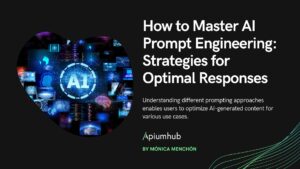Table of Contents
The era of digital transformation calls for businesses to keep up with the trends. Adopting technological advancements has become a priority for companies that want to meet the expectations of their customers.
Accentuare has recently published a report, and more than 80 percent of insurers believe that innovation has to be present for businesses that want to remain relevant. Technology brings changes, and insurance leaders have already started to invest in reforms that would improve the customer experience as well as the overall efficiency of their business.
It can be quite challenging to think of an effective strategy with many potential changes that are just around the corner. Here are some technology-related investment suggestions that you can target and take your insurance business to another level.
Trend #1 – Robotic Process Automation
You will increase efficiency by automating mundane everyday tasks. Less workload and cost operations improve customer satisfaction and save time, as well as money. There are insurance software solutions that cost money, but consulting companies that provide such services are worth it.
Professional software developers and engineers can develop bespoke chatbots, mobile applications, help save resources by providing document management and HR solutions, or create a system for claims, invoices, and bills.
For example, automated document processing reduces average processing times. Customers do not have to wait that long. Automated document processing also means that you can serve more customers on the same day.
Manually collecting data is also not the best approach, especially when you have to process a lot of information. There is potential for inconsistencies and errors. Robotic process automation simplifies the process of data management and delivers results at high speeds.
Trend #2 – Virtual Reality
VR and AR provide a better overall experience to customers who want to learn about insurance services and products. It is possible to recreate accidents to determine if claims are true or false.
Virtual reality also provides an easier-to-digest insurance policy education. VR videos are stimulating because they can recreate real-life situations. These videos shed light on the value of life and health for customers and give insurance companies an excellent opportunity to include an advertisement for an insurance policy that leads to more sales.
Trend #3 – Machine Learning
ML reduces the amount of fraud and other malicious activities, improves the underwriting system, identifies lapsed policies, and helps create personalized offers.
Right pricing is one of the main elements of a successful insurance business. Offering insurance policies at questionable rates will not attract customers. Moreover, the traditional model of collecting historical data also has risks. Some information and the methods of collecting that information can be outdated.
Machine learning incorporates new tools and techniques that create the correct pricing management system. ML also accelerates the underwriting process thanks to the data automation and delivery of accurate information on time.
Trend #4 – Big Data Analytics
Companies with a lot of clients will generate a lot of data. Advanced analytics tools are no longer a luxury but rather something that every ambitious business needs, including the insurance industry. Making data-driven decisions would be impossible without proper data analytics.
Insights into insurance data inform on what is necessary to manage risks and other processes more efficiently, which ultimately leads to an increase in profits. The predictive analysis identifies fraud claims by incorporating rules, database searches, and text data mining.
Lastly, customer acquisition. Analytics tools let the insurance companies to get a better grasp on current and potential customers by analyzing their behavioral patterns. It becomes easier to create custom quotes and sell services on the internet when you have information about the targeted demographic.
Trend #5 – Artificial Intelligence
Even the World Economic Forum recognizes how much of an impact artificial intelligence makes. It is no surprise that the insurance industry is also making adjustments to accommodate AI. Here are some examples of how artificial intelligence can give you a competitive edge.
- Personalized customer experience. An AI-based chatbot offers a pleasant buying experience for new and old customers alike. The experience is created from social data and the geographical location of the customer. Moreover, AI-based chatbots respond to clients immediately, unlike real people.
- Facial recognition. The insurance industry was one of the pioneers in implementing facial recognition technology. The technology scans a picture of a client and uses a gamification technique that uncovers potential life-threatening habits. Facial recognition can also predict the lifespan of the customer and provide a calculation for the premiums.
Conclusion
Traditional insurance companies can take advantage of new technologies and leverage them to create more sustainable and efficient business models. Furthermore, dynamic technology developments also encourage changes in customer expectations and demands. Understanding the impact of a technology clearly is the first step toward figuring out which technologies you need to adopt.









